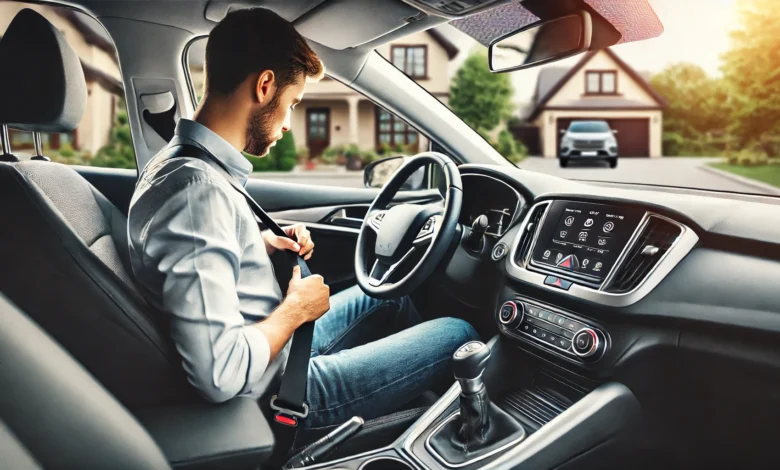What is the First Thing You Do When You Get in the Car? Essential Safety Habits

When you step into a car, what is the first thing you do? Whether you’re a new driver or someone with years of experience behind the wheel, establishing a consistent routine when you get into your car is vital. From safety precautions to comfort adjustments, these initial steps can set the tone for your entire journey. So, what are the essential actions you should take right away, and why are they so important?
Setting the Tone: Building a Routine
Building a routine from the moment you get in the car is crucial for both safety and comfort. Some people immediately buckle their seatbelt, while others adjust their seat and mirrors before anything else. These habits, although different, serve the purpose of preparing the driver for a safe and comfortable ride. To ensure that you’re not missing out on any important details, let’s break down these essential steps.
Seat Belt First: A Matter of Safety
One of the most fundamental actions is fastening your seatbelt. Not only is it the law in many places, but it is also a proven lifesaver in case of an accident. The first thing you do when you get in the car might be to reach for that seatbelt, ensuring it is secure before you even think about starting the engine. This simple action takes only a second, but it can make a
Adjust Your Mirrors and Seat
Before hitting the road, adjusting your seat and mirrors ensures that you have full visibility and control. Being comfortable and having the right posture can enhance your reaction time and awareness on the road. Checking the rearview and side mirrors for a clear line of sight can help you navigate confidently, while proper seat adjustment helps maintain control over the car’s steering and pedals.
Do a Quick Check of Your Dashboard
The next step might not be so obvious, but it’s equally important: a quick scan of your dashboard. Make sure no warning lights are on and that your fuel level is sufficient for your journey. Noticing any issues early can prevent unnecessary troubles later on.
Get Familiar with the Environment
Take a moment to get familiar with the environment around your car. Are there pedestrians nearby? Is your driveway clear of obstacles? By taking in these surroundings before you drive off, you’re ensuring a smoother and safer departure. This step is often overlooked, but being aware of your environment can great
What is the First Thing You Do When You Get in the Car?
So, what is the first thing you do when you get in the car? Is it to adjust your seat, buckle up, or maybe set up your GPS? Each of these actions plays a significant role in preparing for a safe drive. Developing a consistent habit that covers all safety and comfort needs can be the difference between a smooth journey and an inconvenient or even dangerous situation.
Why Consistency is Key
Forming a routine not only ensures safety but also saves time. When you perform the same actions every time you get into your car, it becomes second nature, minimizing distractions and allowing you to focus on driving. This consistency becomes a habit that helps protect you and your passengers, making sure you’re prepared for anything that may happen on the road.
The Role of Distractions: Minimize Them
Before starting your journey, it’s crucial to eliminate any distractions. This means setting up your phone’s GPS, music, or other controls before you drive off. Avoid using your phone while driving, as even a quick glance can lead to dangerous situations.
Tips to Prevent Issues in the Future
Ending your routine on a good note can also make all the difference. Here are some practical tips to help prevent common issues:
- Create a Pre-Drive Checklist: Write down essential actions like adjusting mirrors, seatbelts, and checking the dashboard, and run through this checklist every time you enter your car.
- Keep Your Car Tidy: A clean car interior not only looks nice but also ensures that nothing will roll under your pedals or block your view.
- Schedule Regular Maintenance: Regularly checking your vehicle’s fluids, brakes, and tires can prevent unexpected issues and give you peace of mind.
- Avoid Multitasking: Keep your focus on driving. Whether it’s setting up your playlist or adjusting the air conditioning, do it before you start moving.
Incorporating these steps into your routine will not only make sure you drive safely but also help you start your journey stress-free. Remember, the first thing you do when you get in the car sets the tone for the entire drive. By forming good habits and taking care of essential details, you’re setting yourself up for a safe, smooth journey every time.










